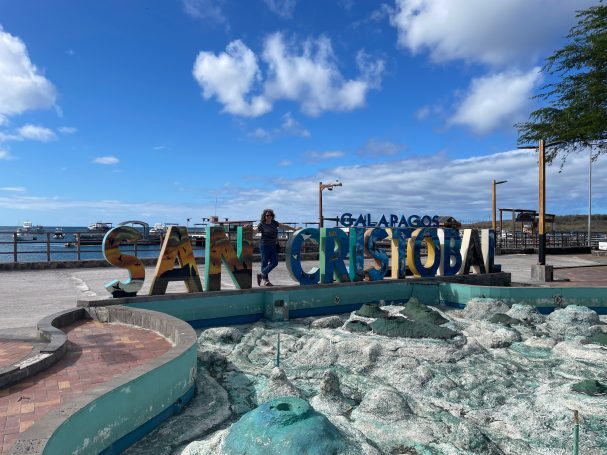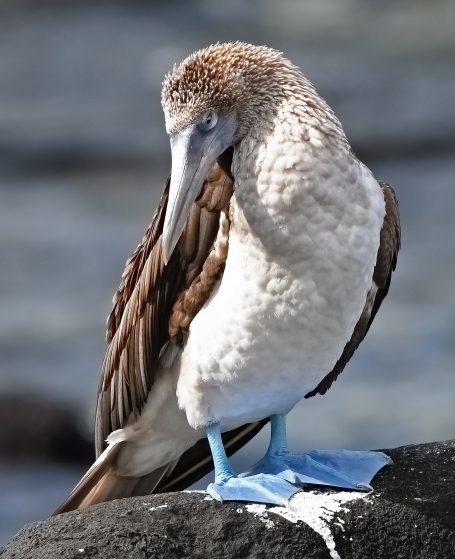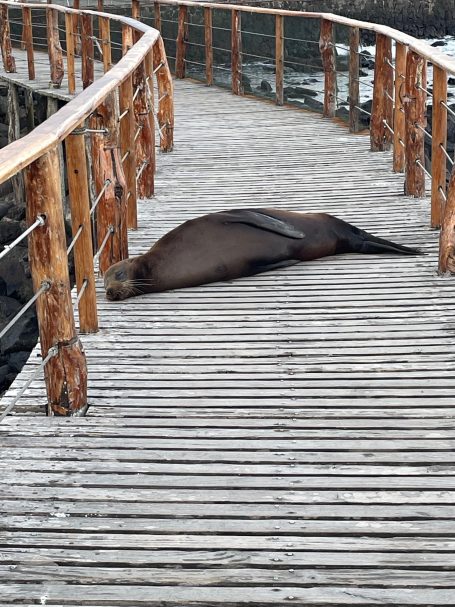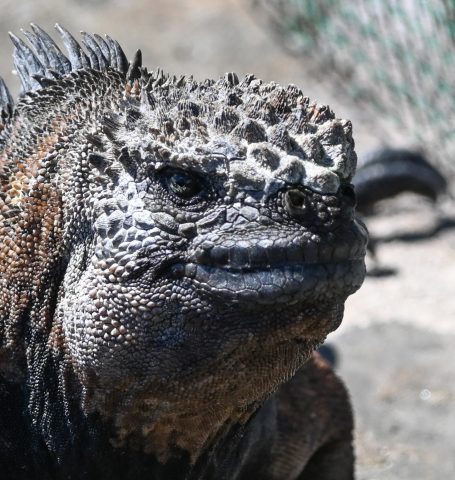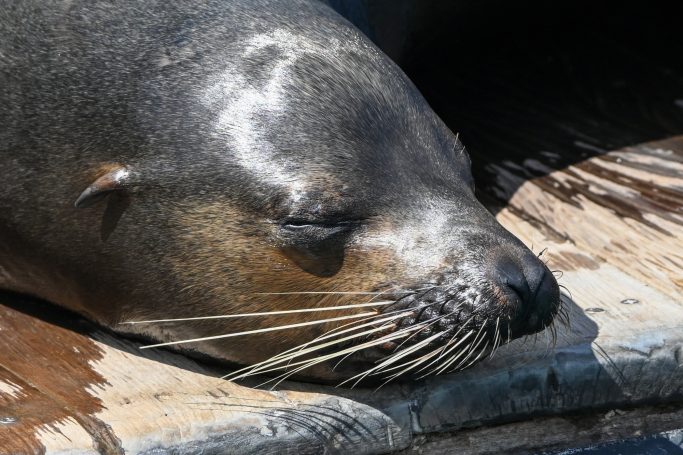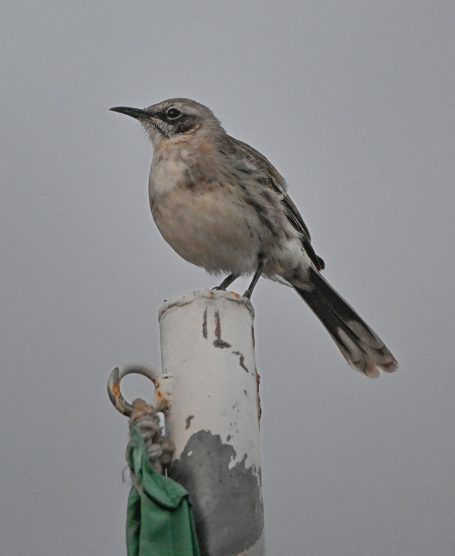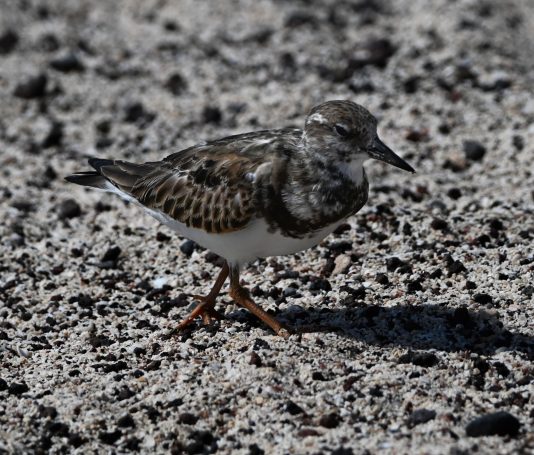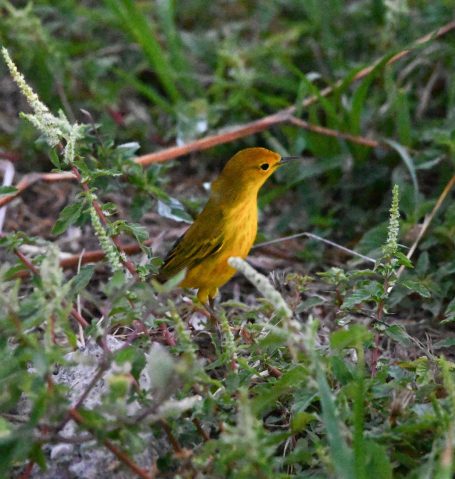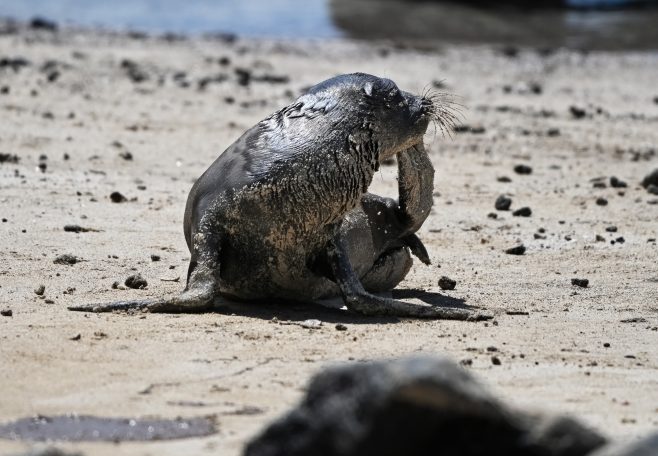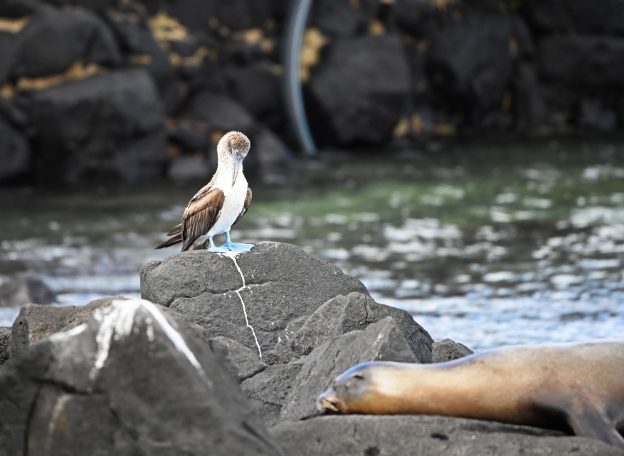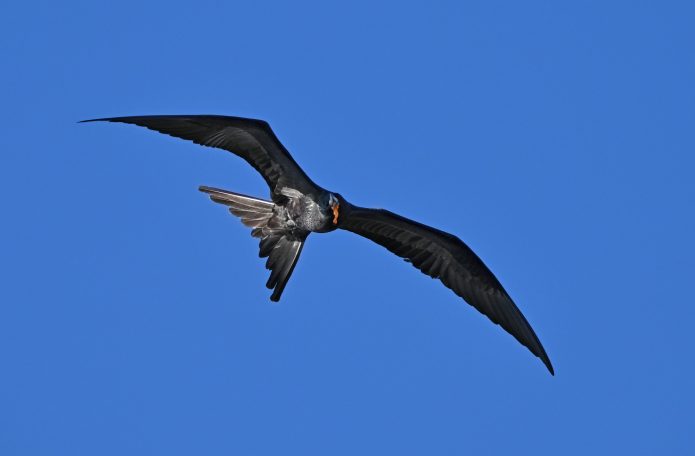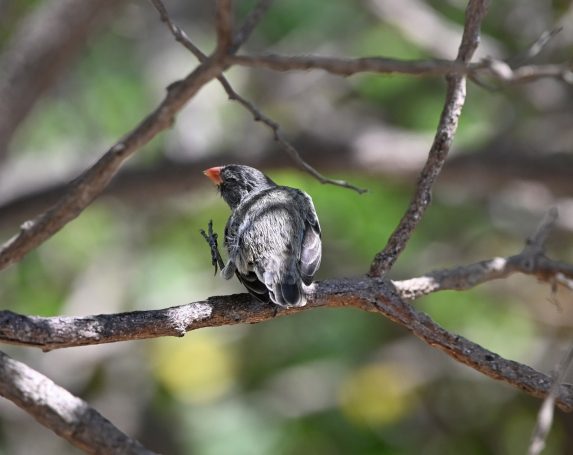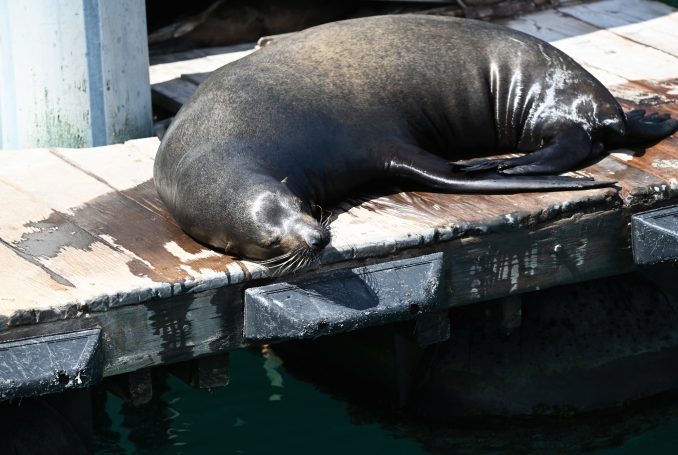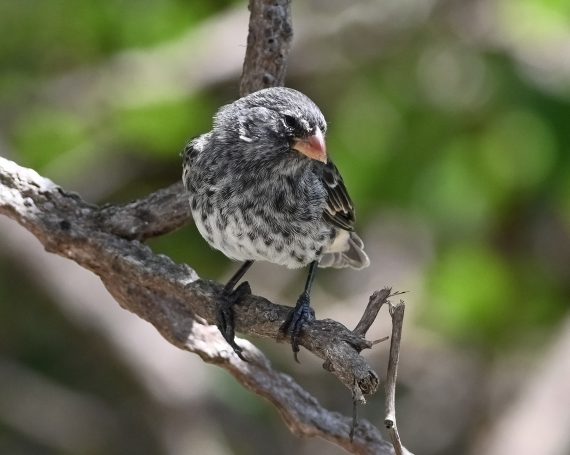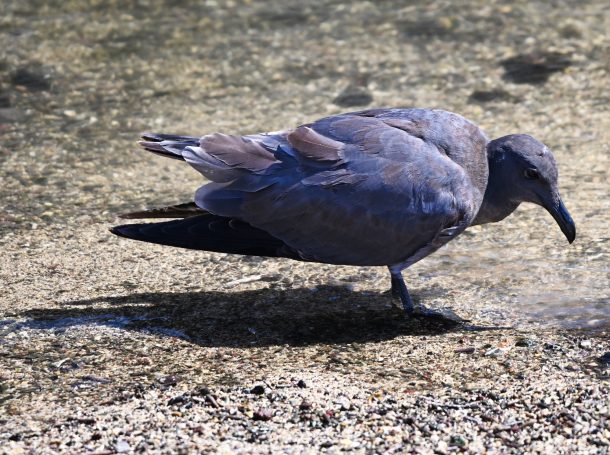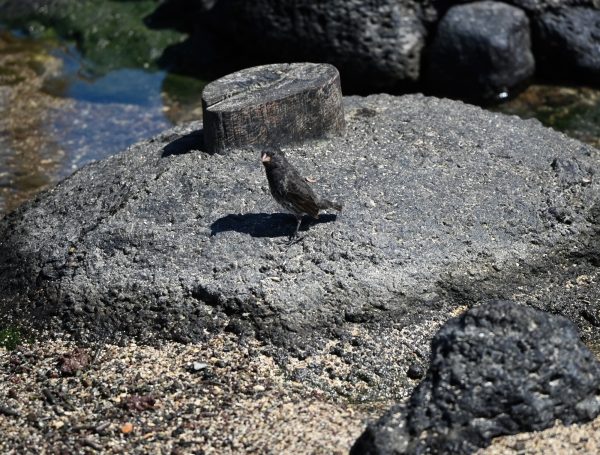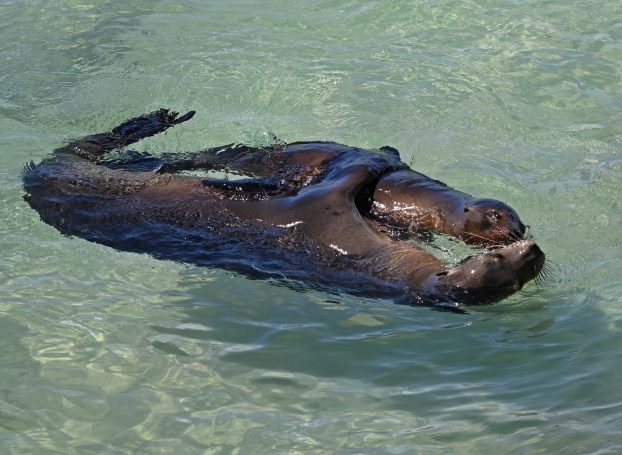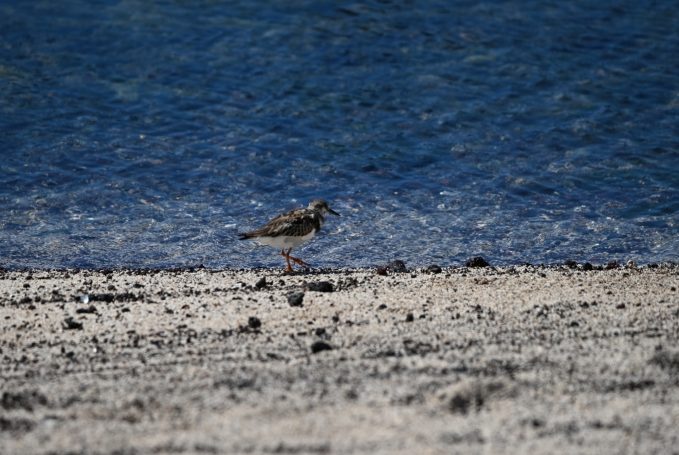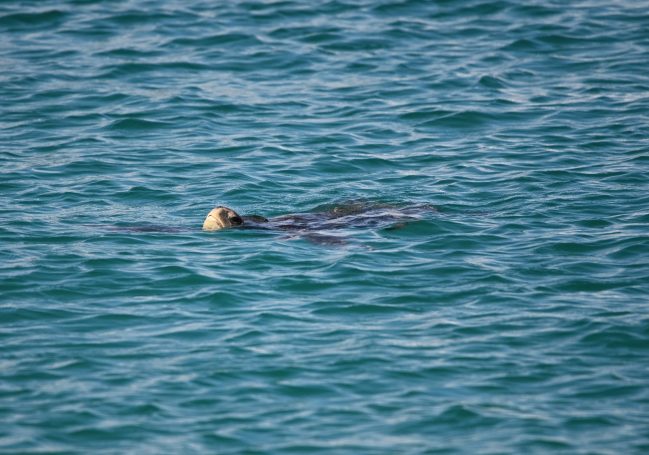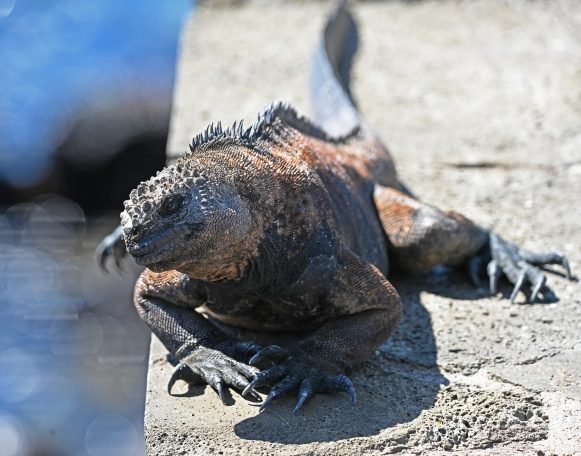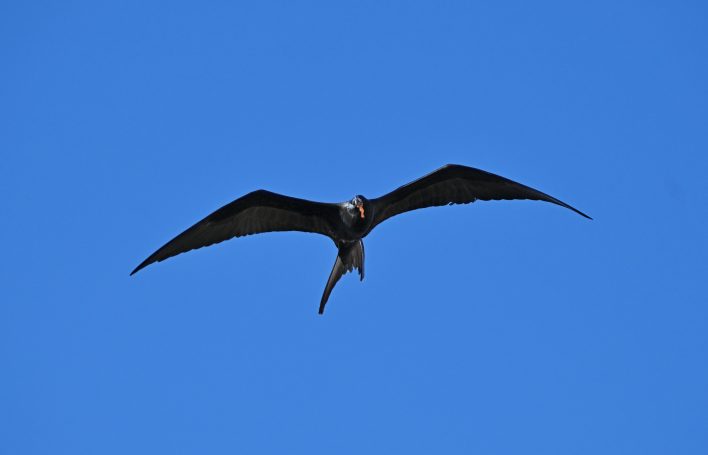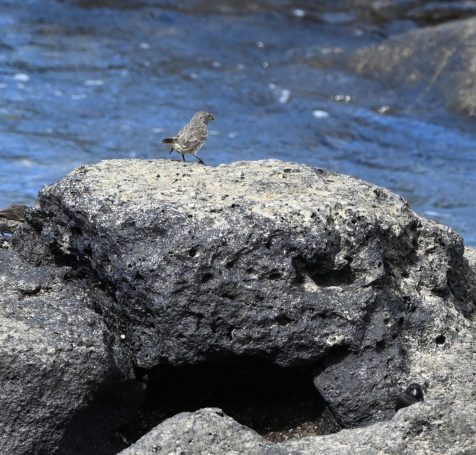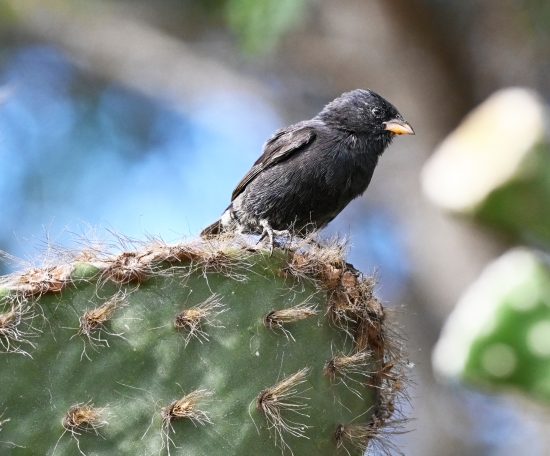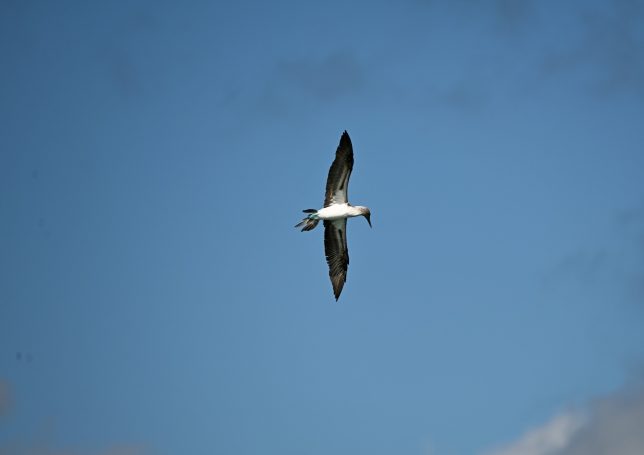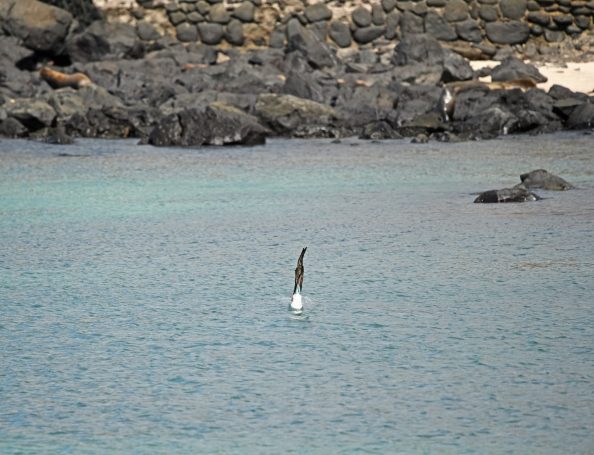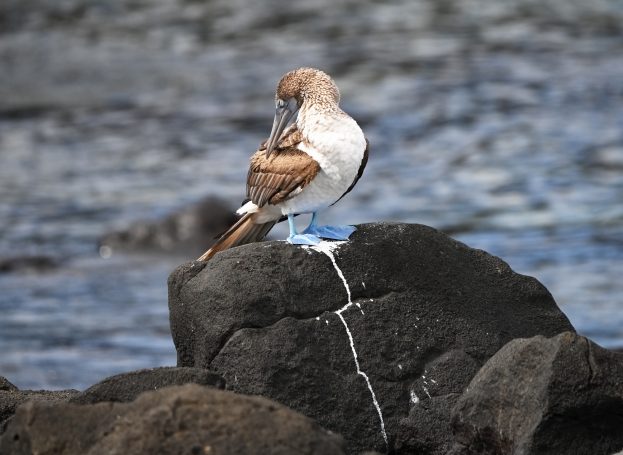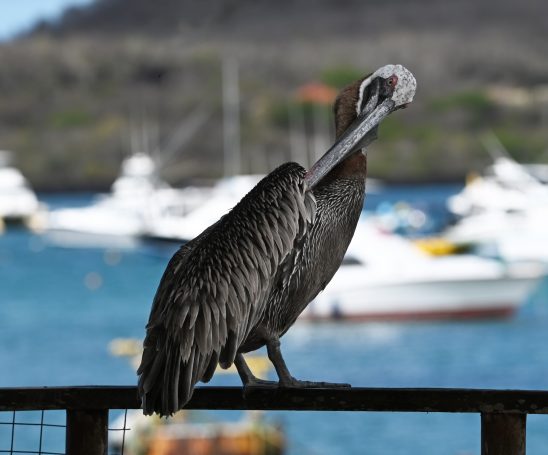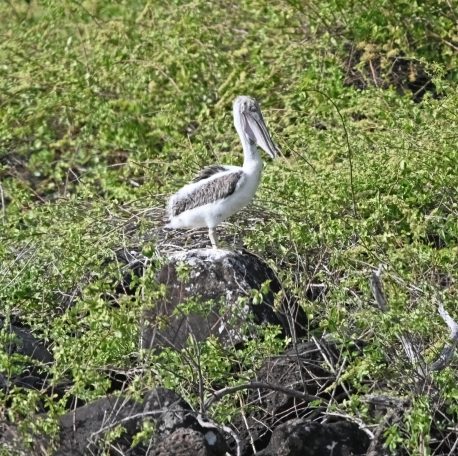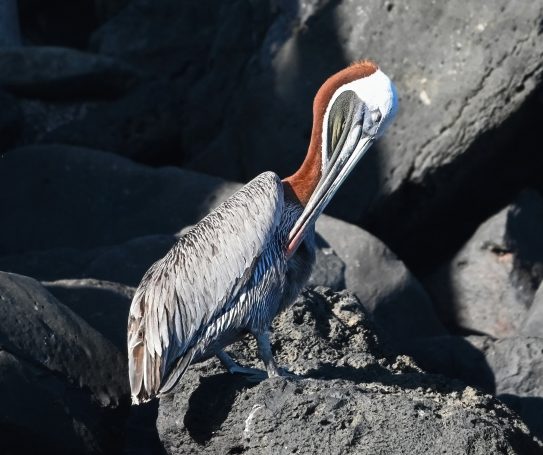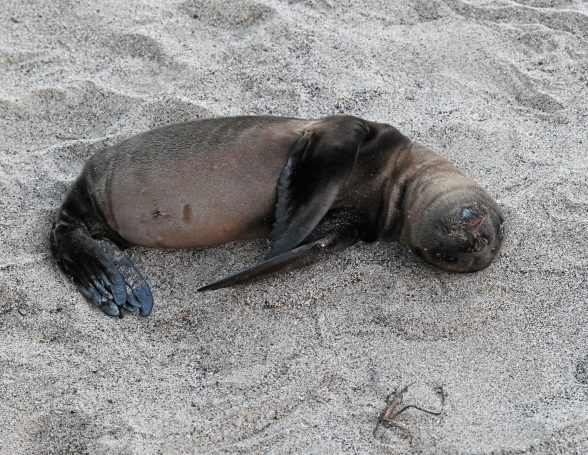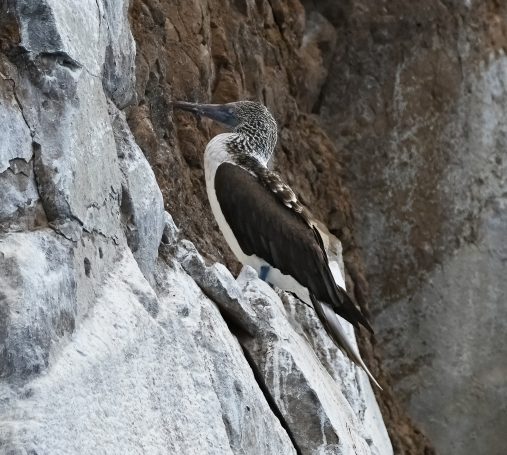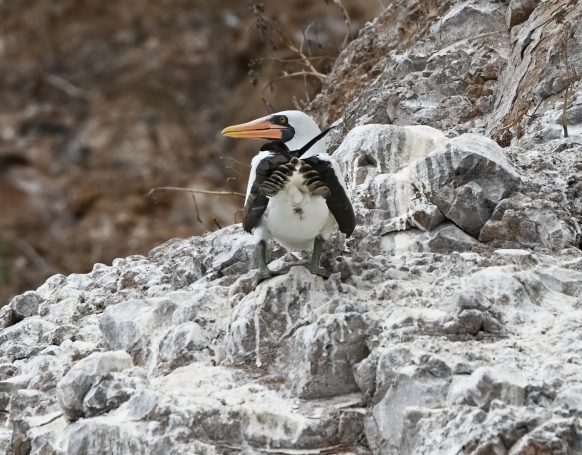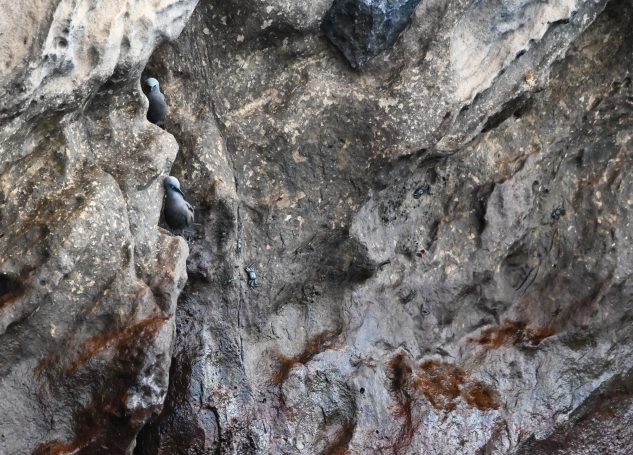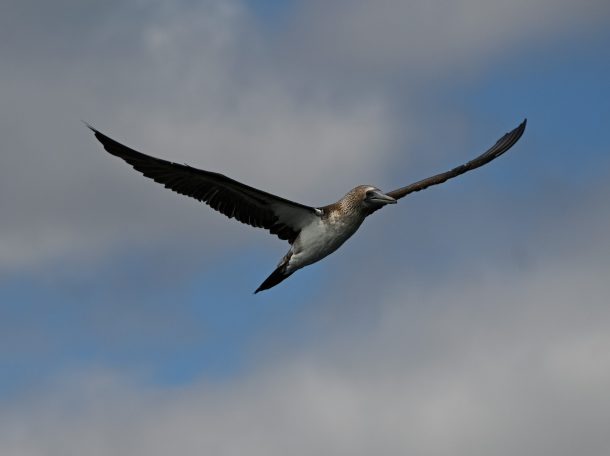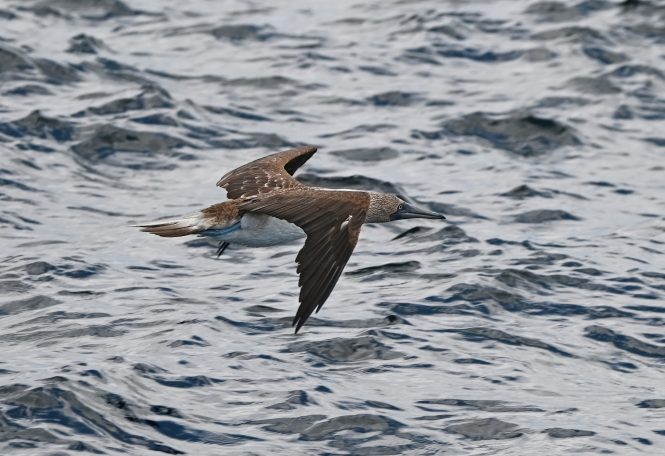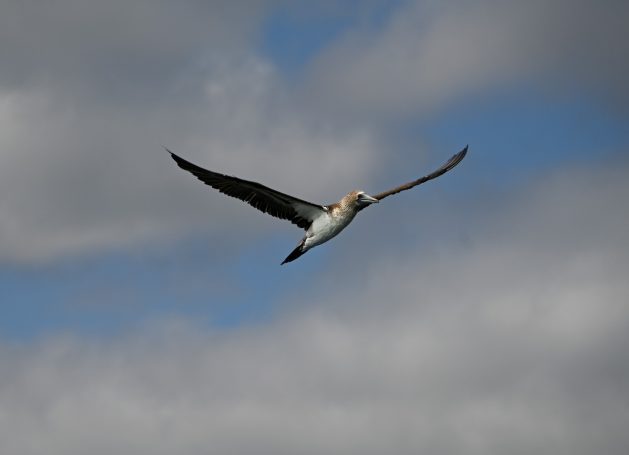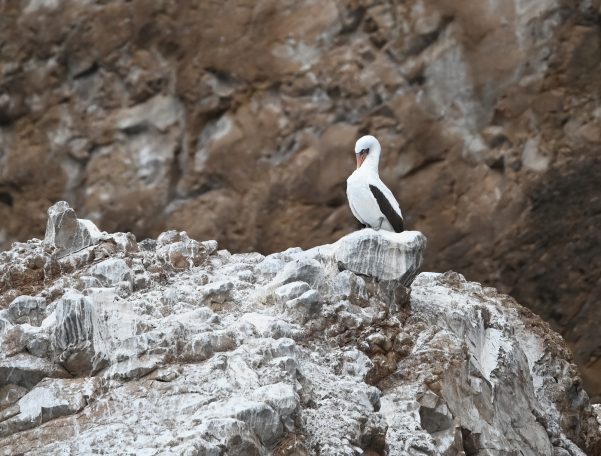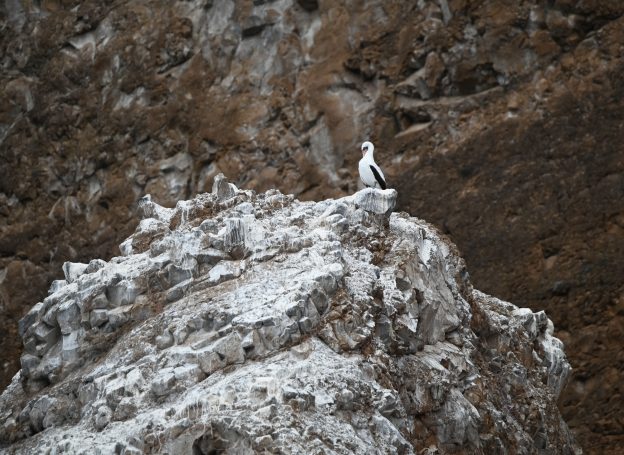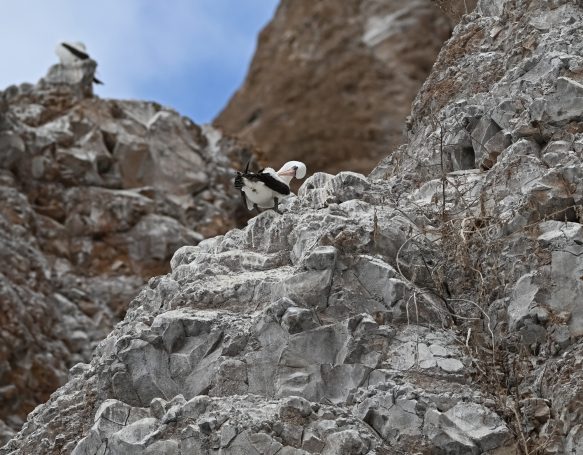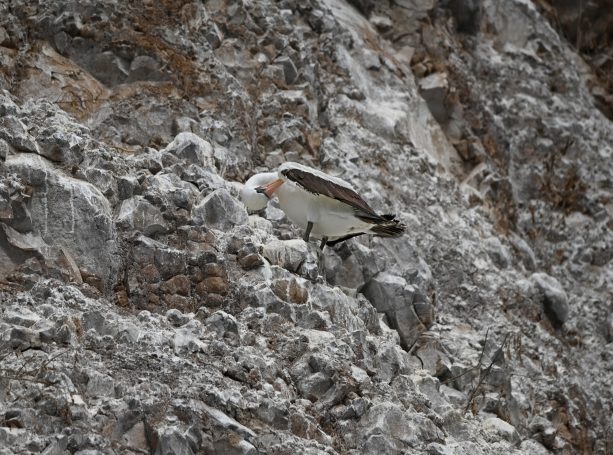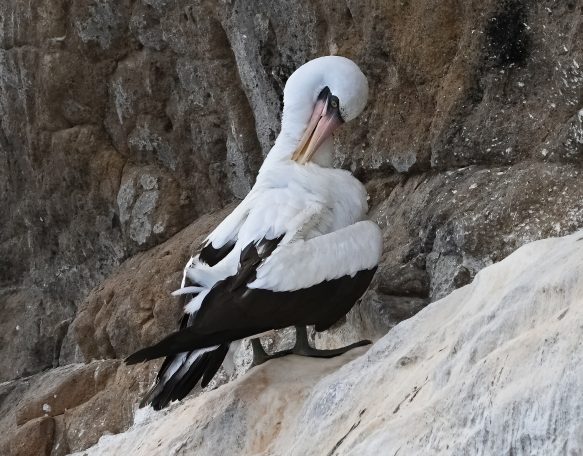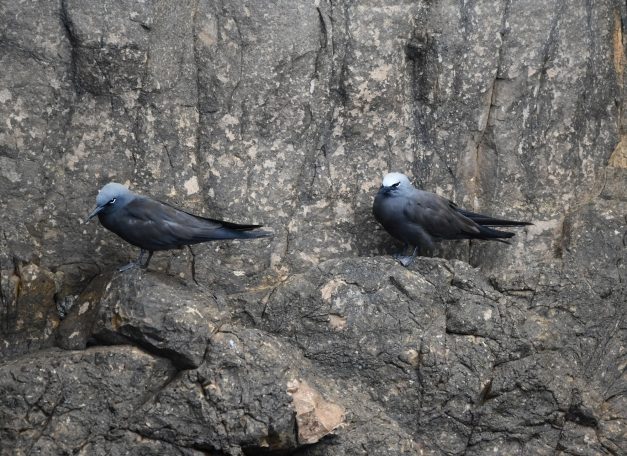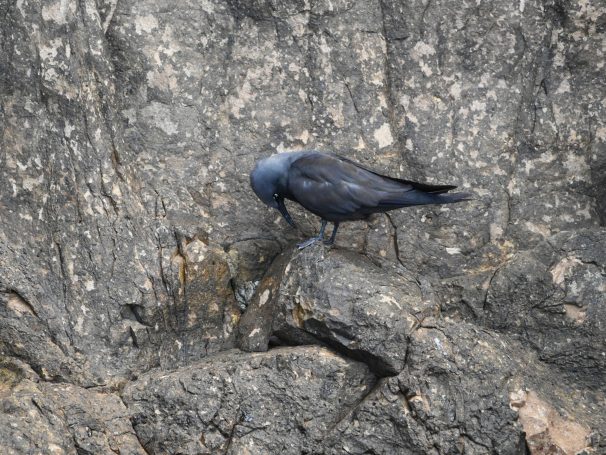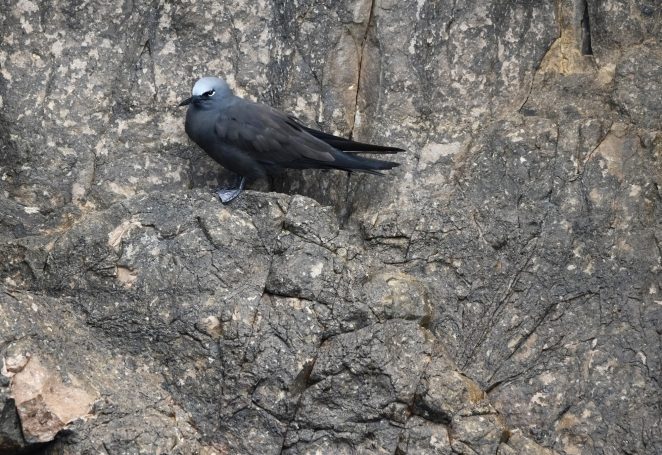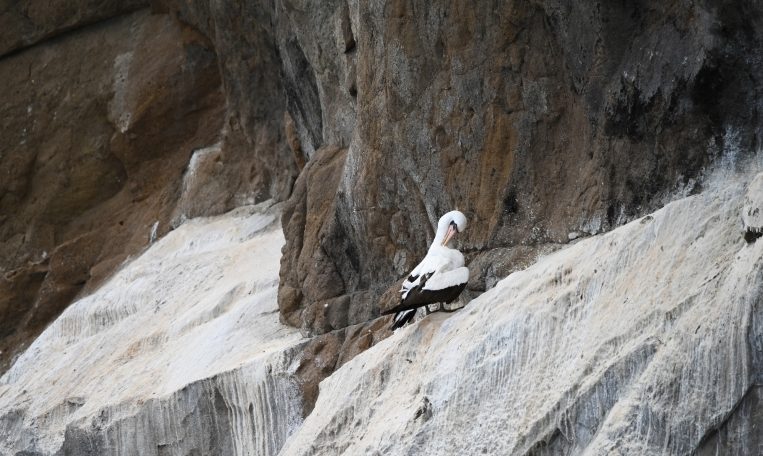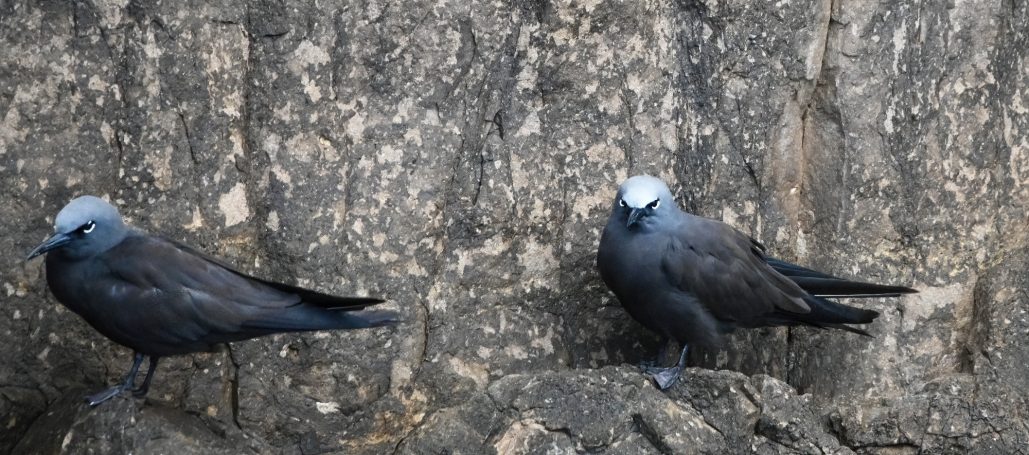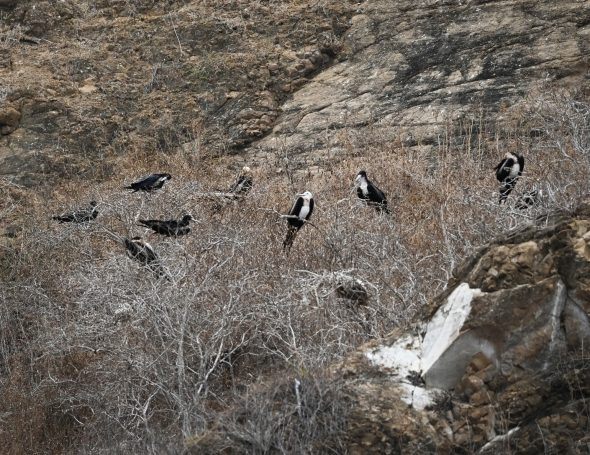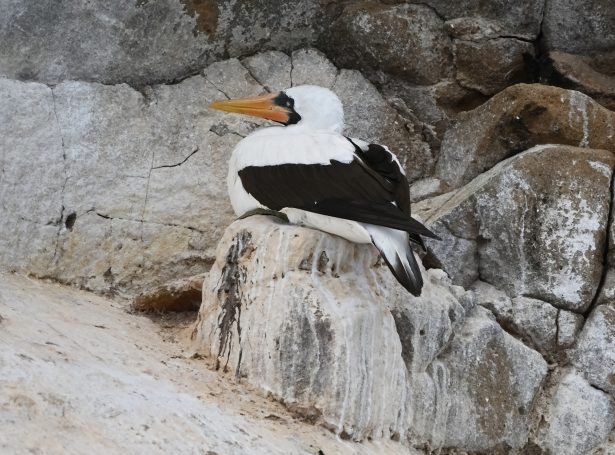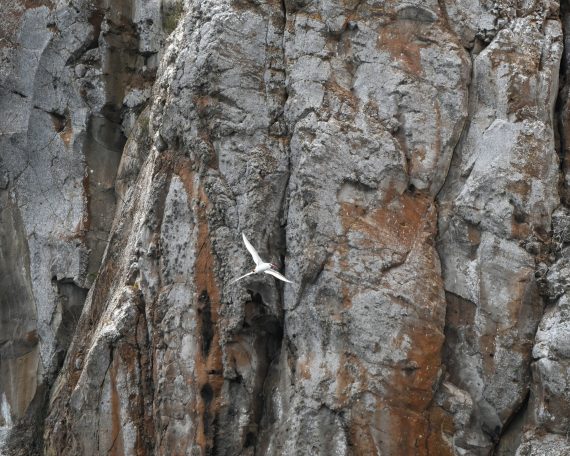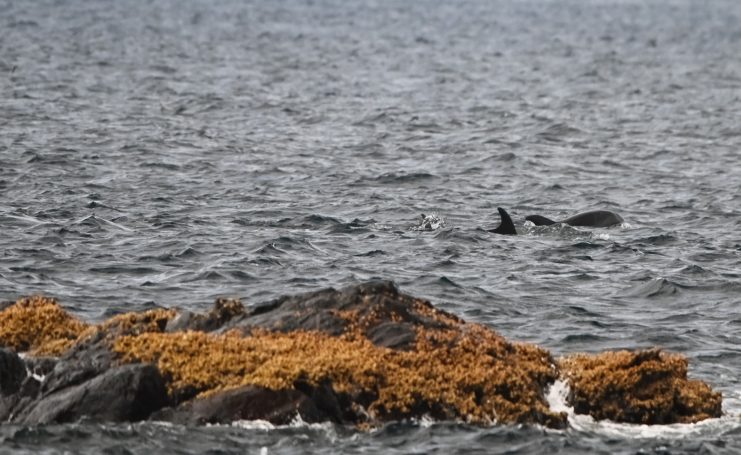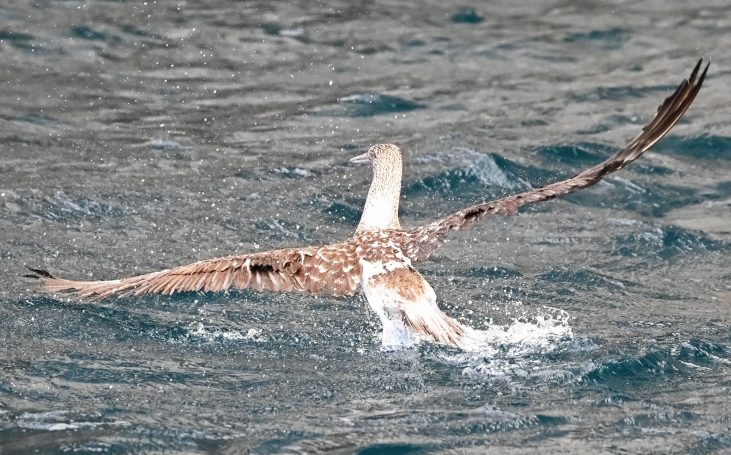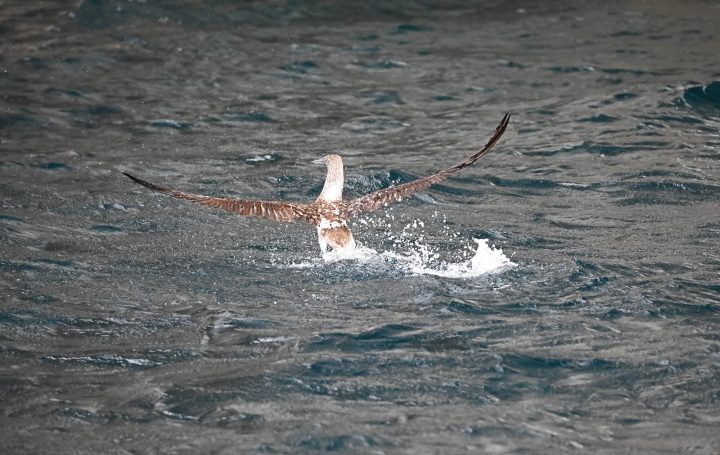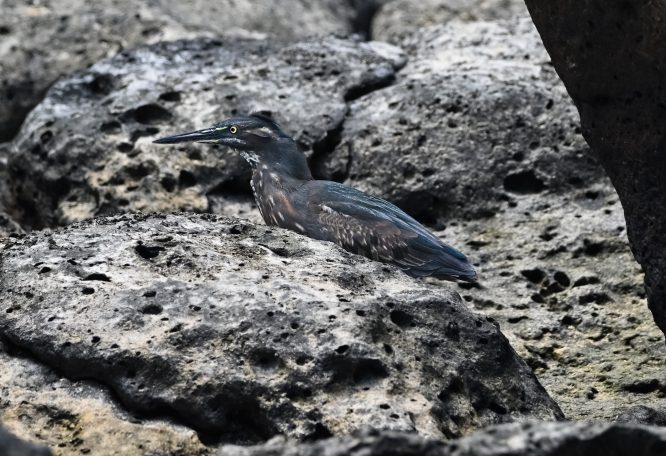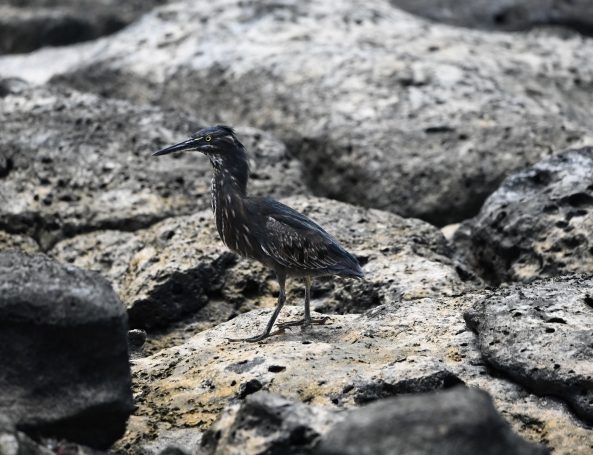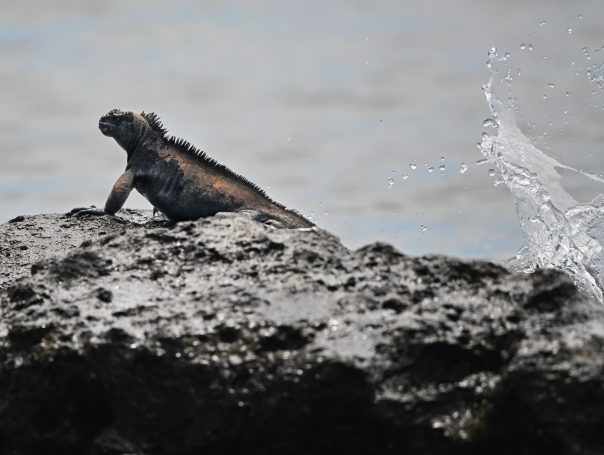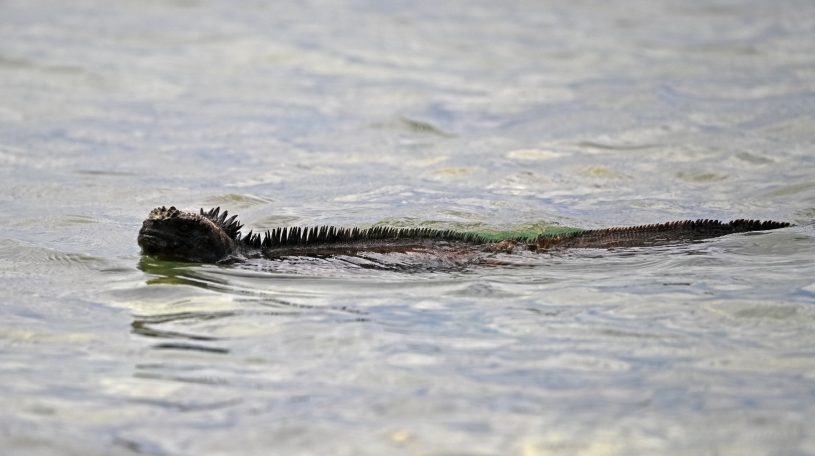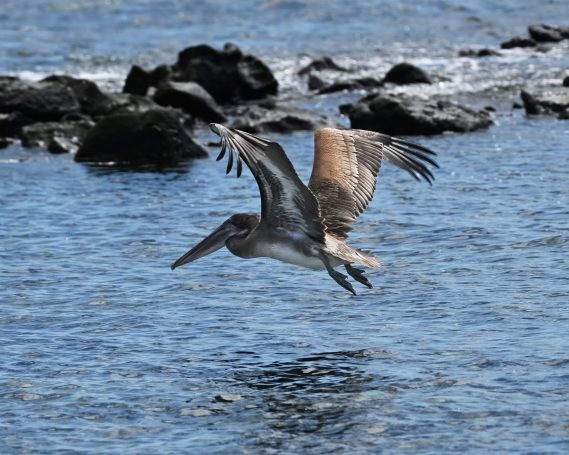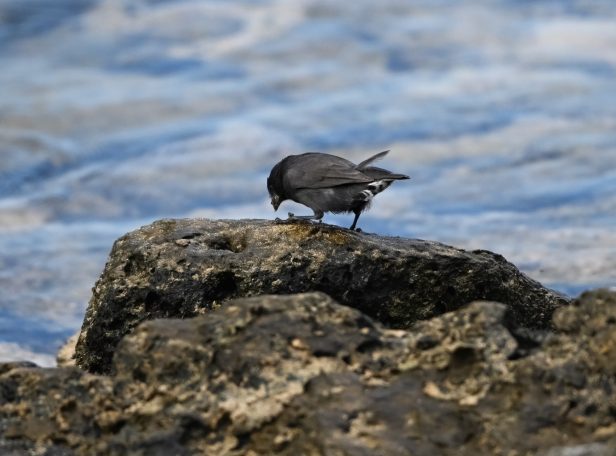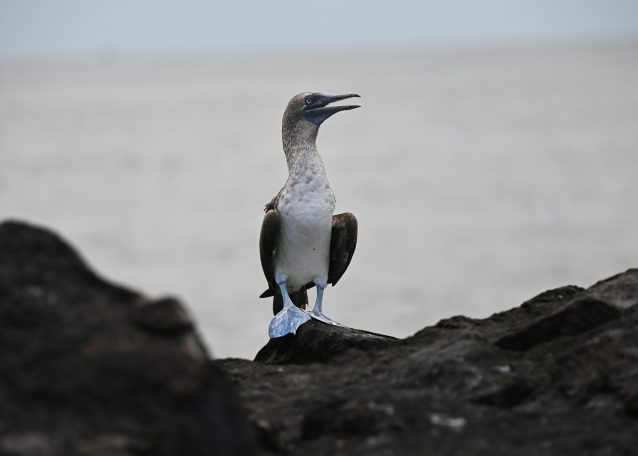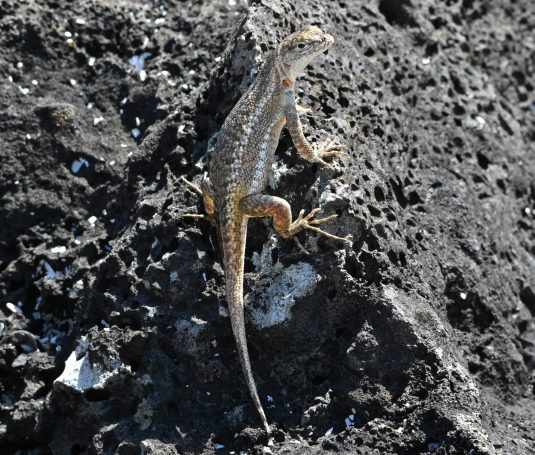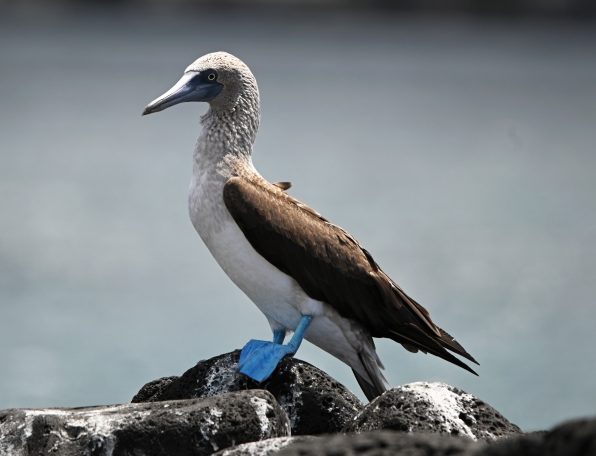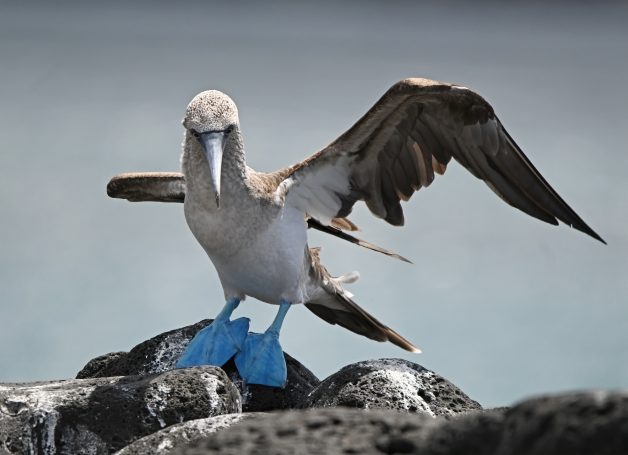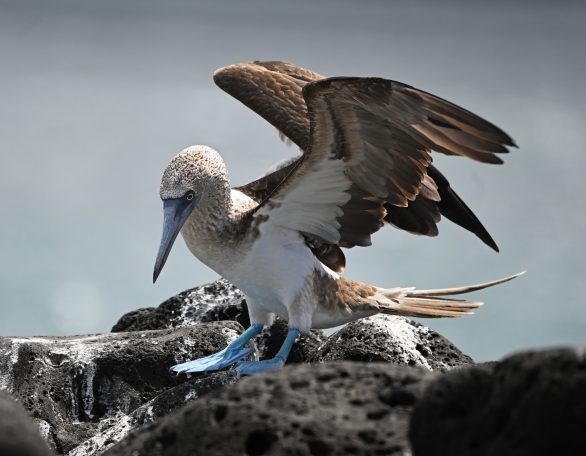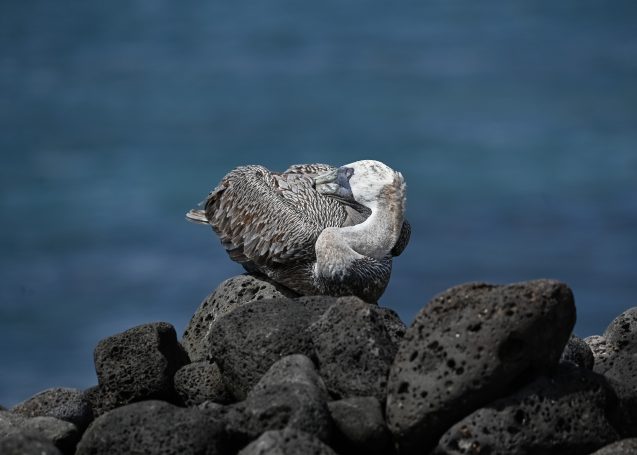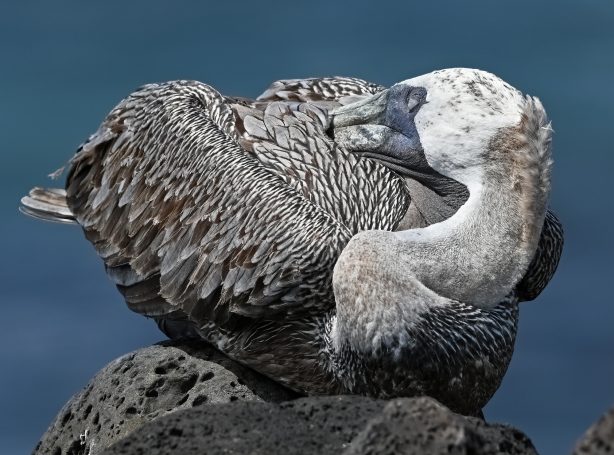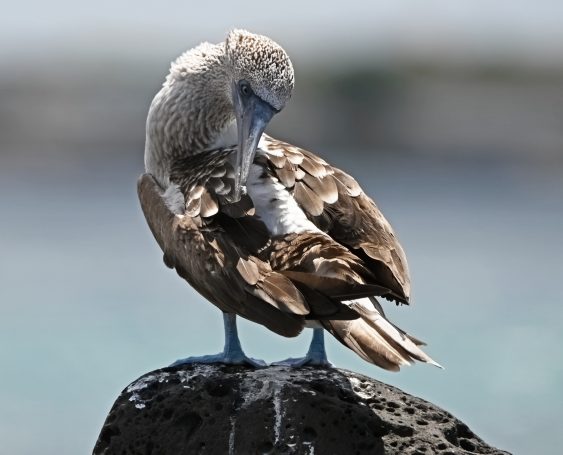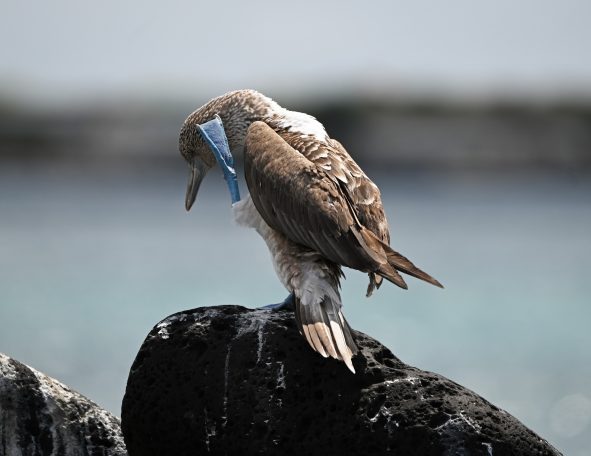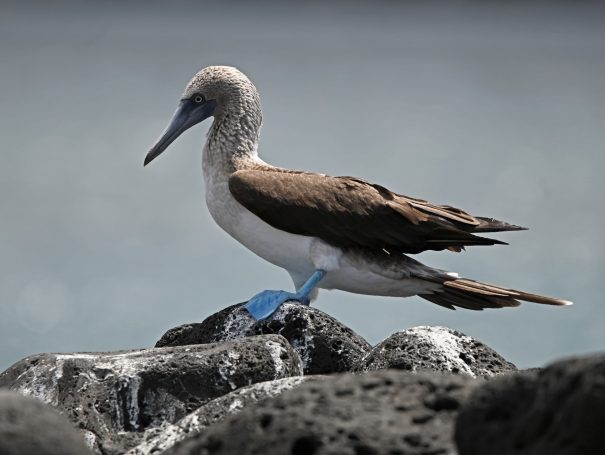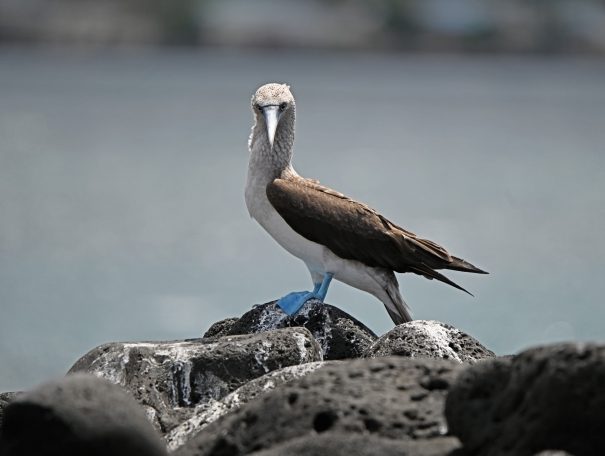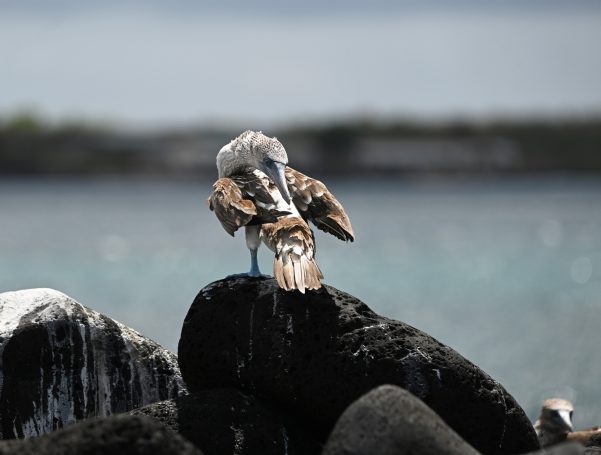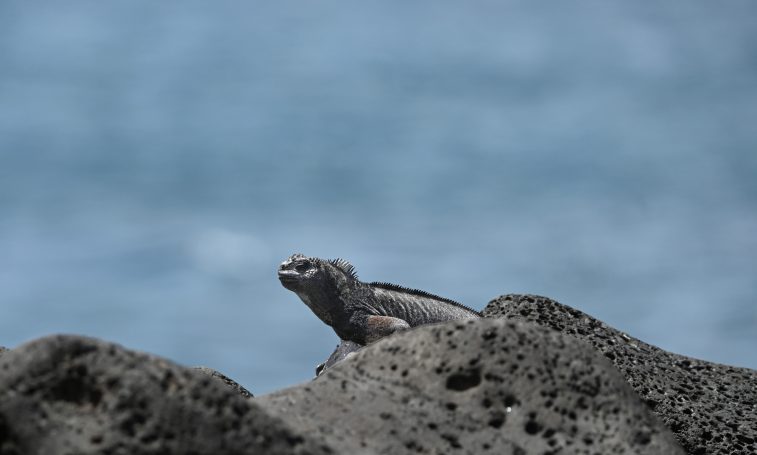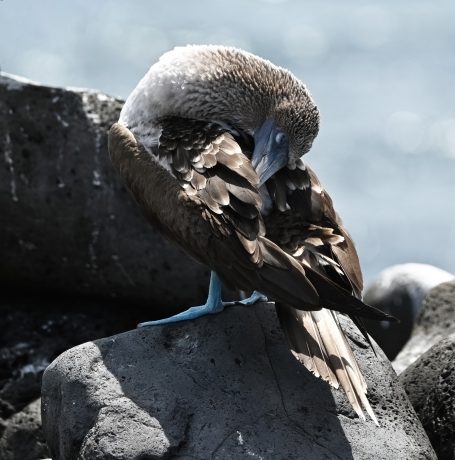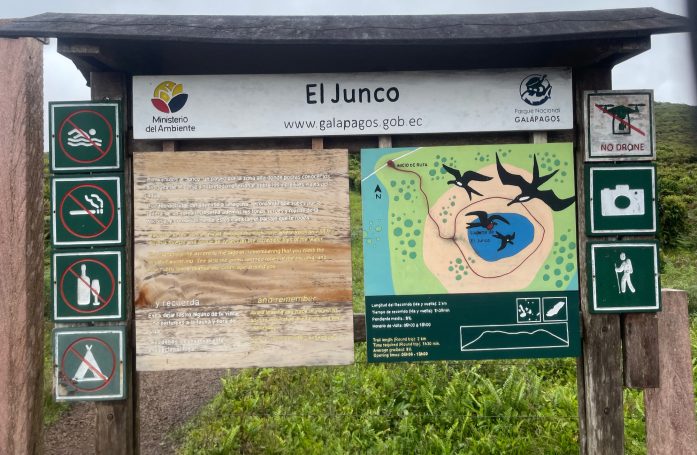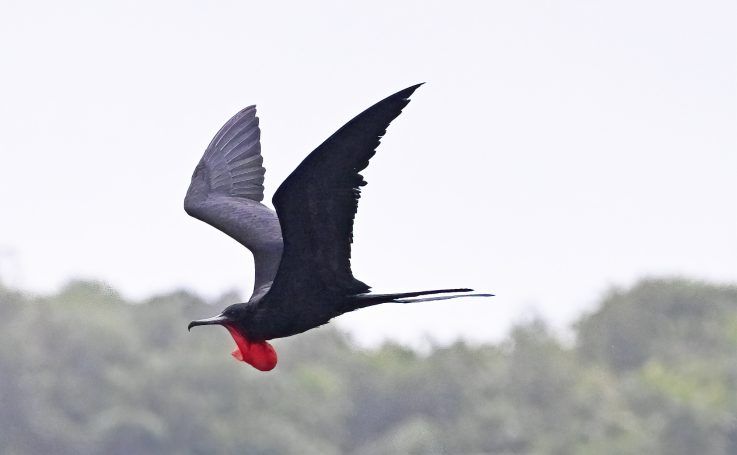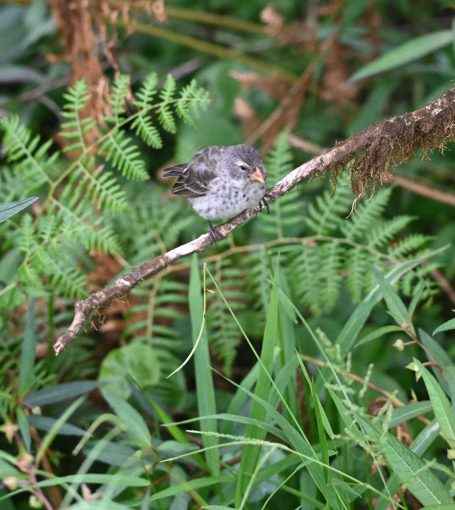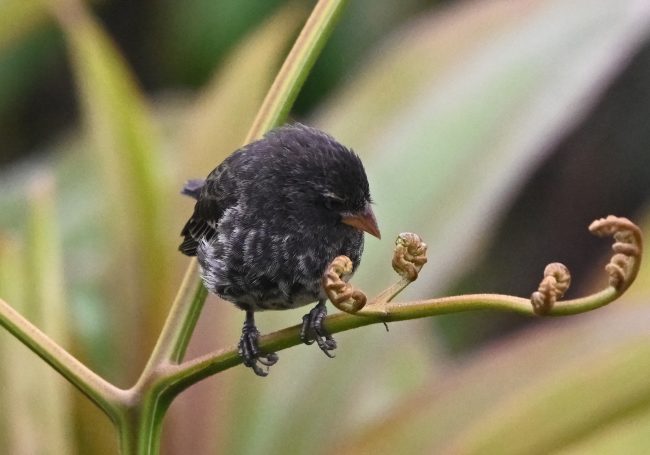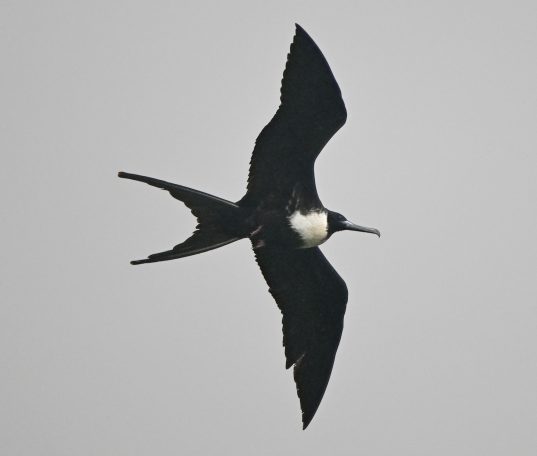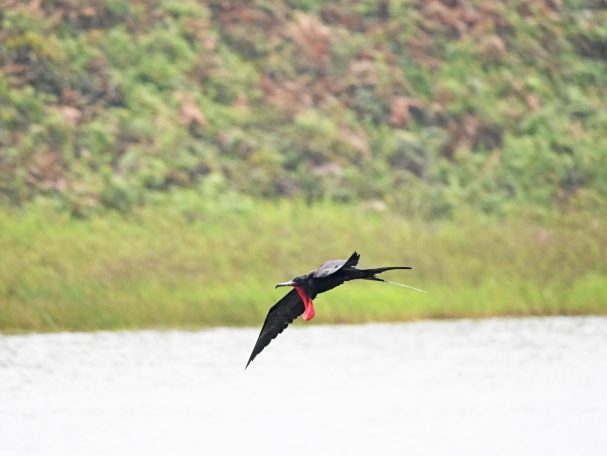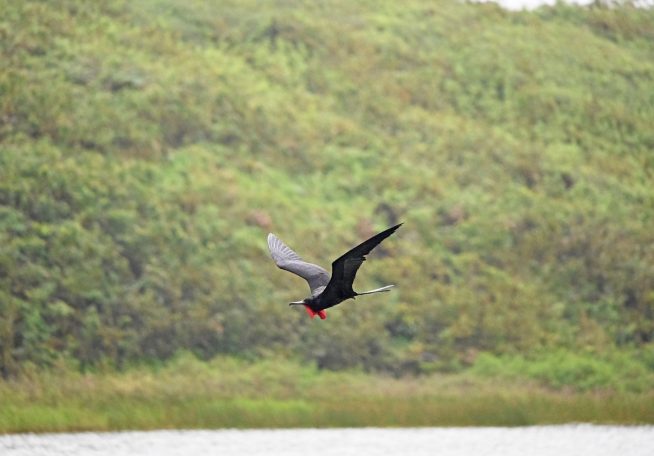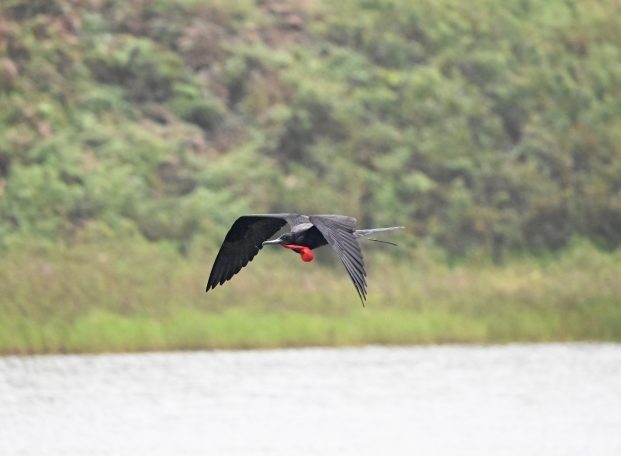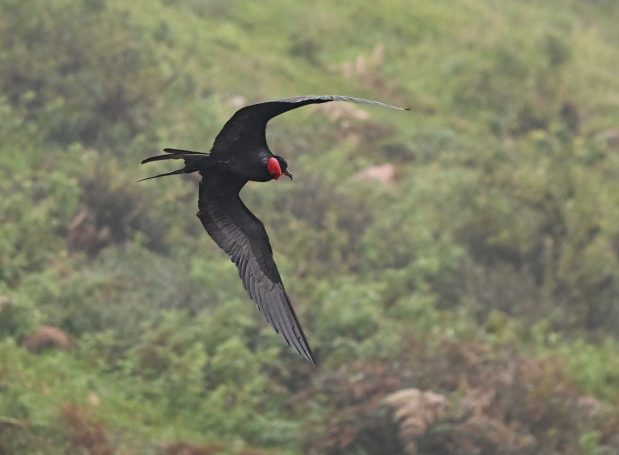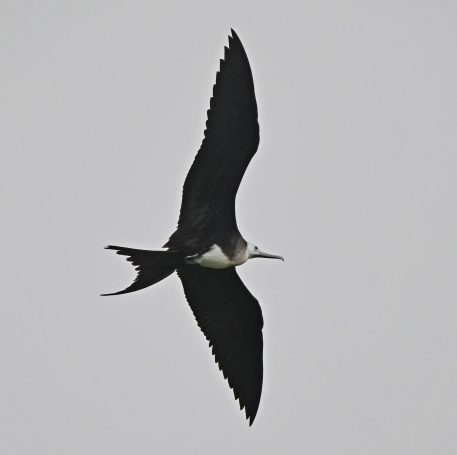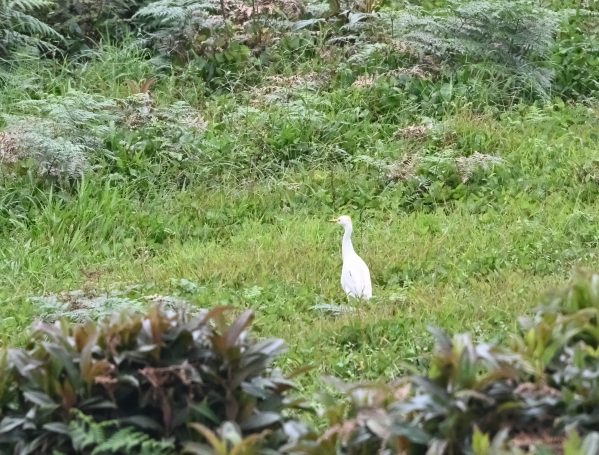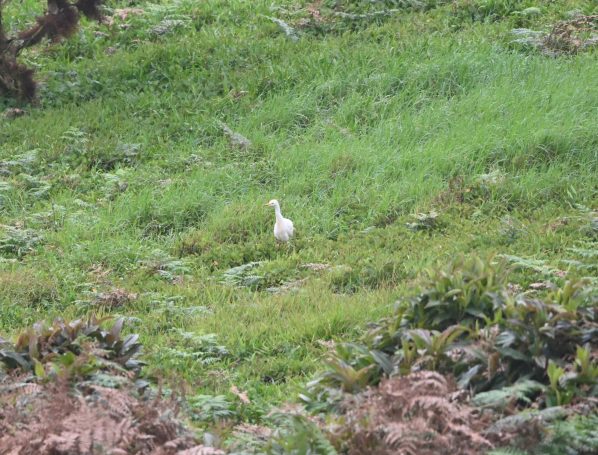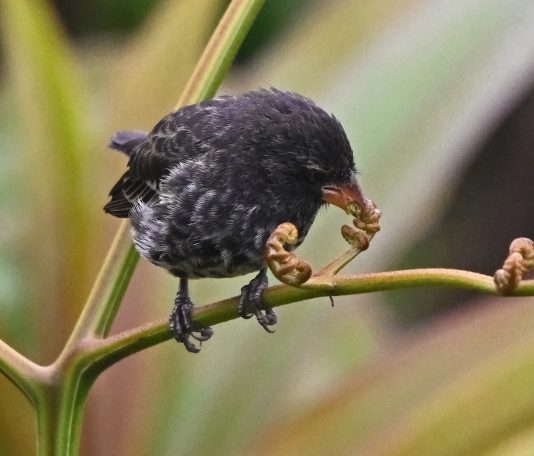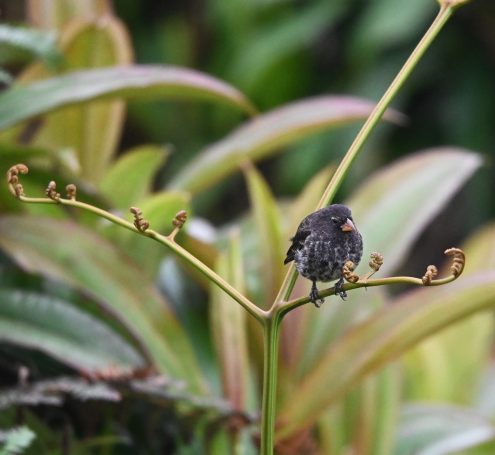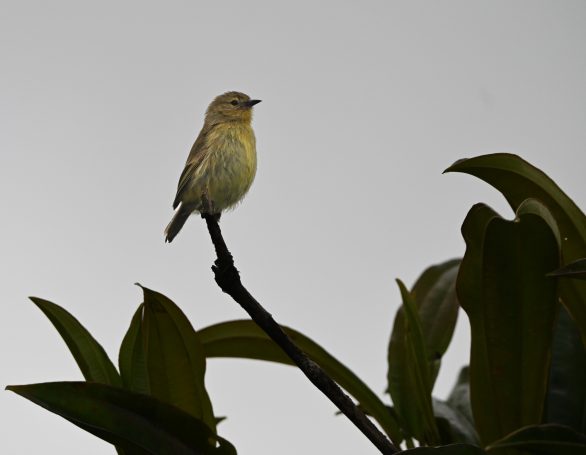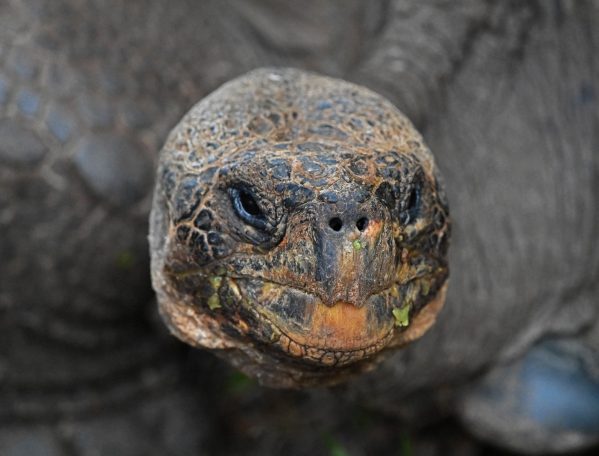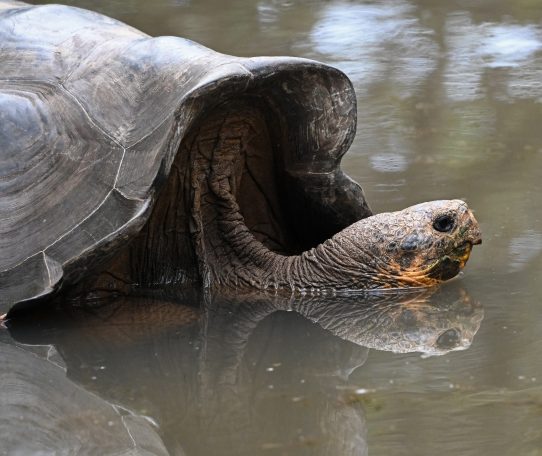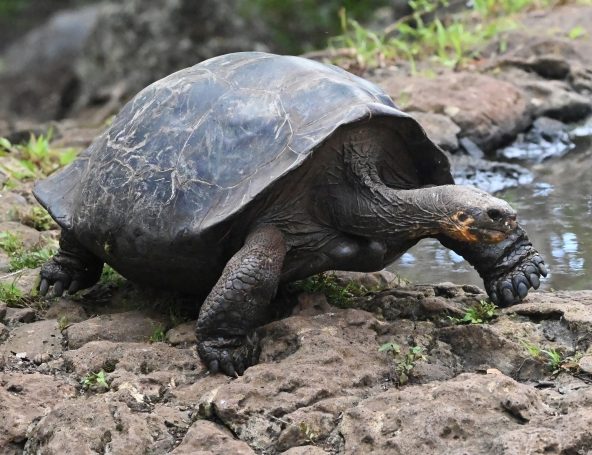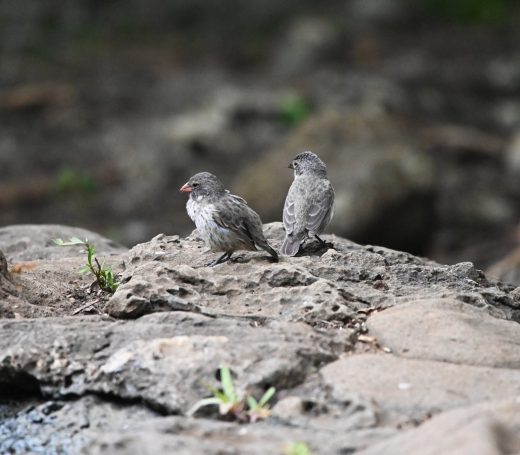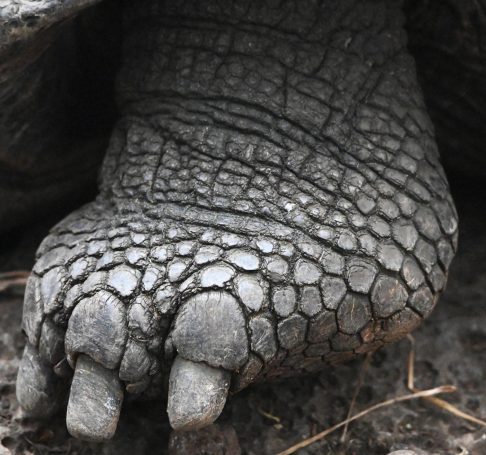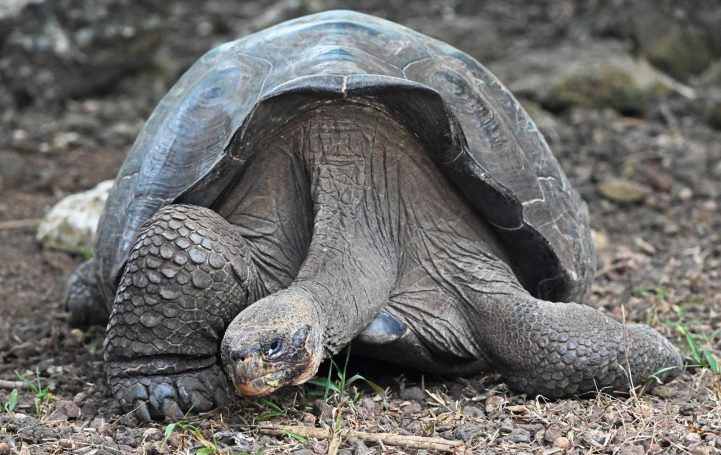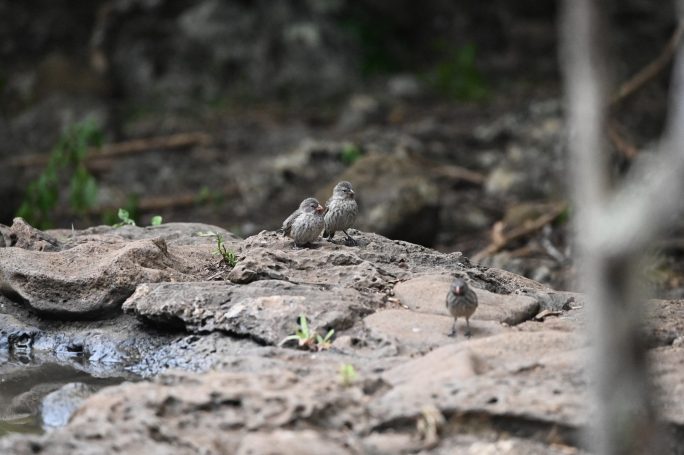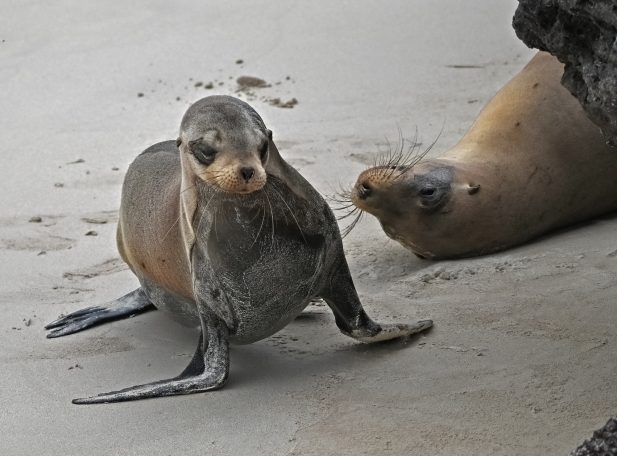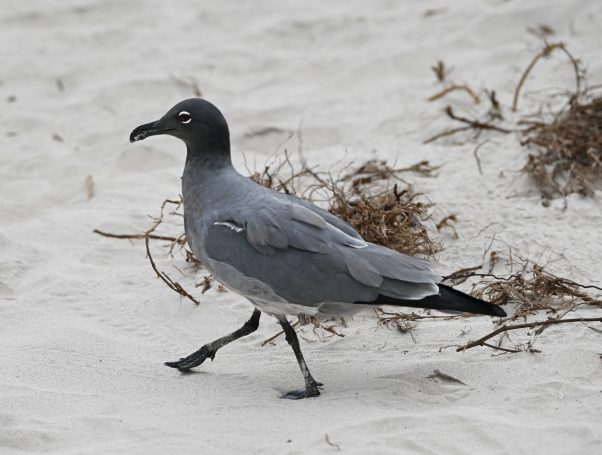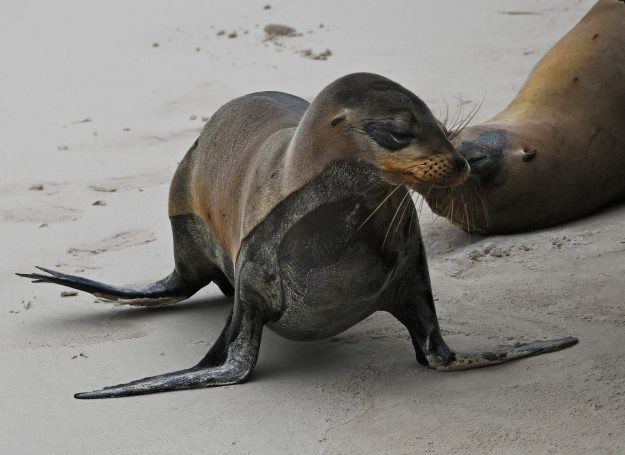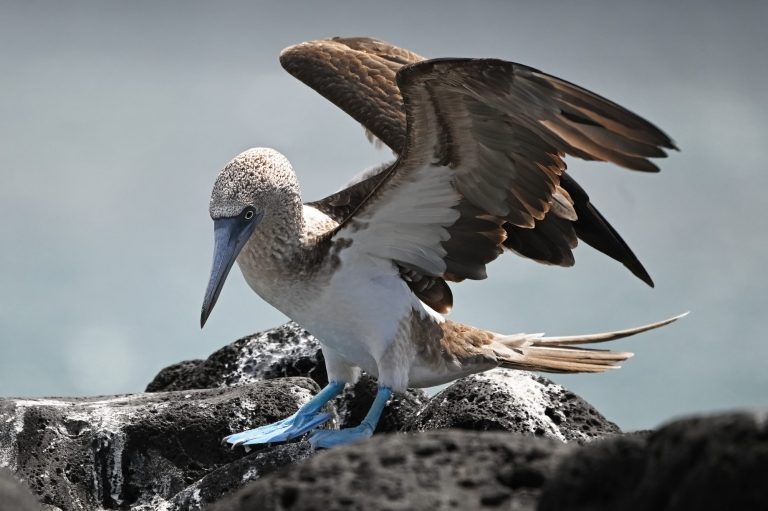November 2023 : Galapagos , San Cristobal
06/11/23 : We arrive at San Cristobel island, The Galapagos
This section is the wildlife we saw on our first afternoon / evening on the island having flown in from Quito
06/11/23 : We arrive from Quito at San Cristobel Island, The Galapagos
Today we left Quito, the airport is about an hours drive from the city, and you need to get your bags checked for organics that are not allowed on the islands, pick up your pass and board the plane. The plane we were on flew first to Guayquil airport where most of the passengers disembarked, we stayed on the plane and after 40 mins we were refueled and on our way to the Galapagos. The flight was just over an hour and we landed on the smallest airstrip we have ever seen and entered the Galapagos proper.
We were picked up and taken to our hotel on the harbour front, there is only one town on the island and its 2 mins from the airstrip so as soon as we had checked in and unpacked, said hello to the Galapagos Warbler perched on our balconey, we decided to have a walk along the harbour front before we had our tea.
What we couldnt expect was the sheer numbers of wildlife that was right there, straight away as we walked along. The beach in front of the hotel was full of Sealions, young and old swimming, sleeping and playing. Among the Sealions were Ruddy Turnstones, Frigate birds flying over head, Pelicans perched on the fences and Marine Iguanas all over the rocks and piers.
Further along the Blue Footed Boobies were flying high up before diving directly down into the sea and emerging with a fish, exactly the same as Gannets do in the UK.
Further along there were Sea Turtles everywhere, Darwins Finches, Galapagos Mocking birds, Sally Lightfoot crabs and Lava Gulls ( one of the rarest birds on the planet)
All of these birds and animals had zero interest in us , and both ignored us and refused to move as we walked along. Here you have to keep six feet distance between you and an animal, and its down to you, they wont budge ! So we often had to detour to avoid standing on a Sea Lion or a bird.
Amazed and shocked we returned to the hotel , changed and went for our evening meal, along the way a Lava Heron ( a Striated Heron offshoot) just jumped on to the fence rail to get a look at us, we both just stood with our mouths open. Tomorrow we were being guided on a walk up to the volcanic crater and fresh water lake in the middle of the island and literally couldnt wait, we fell asleep to the sounds of the Sealions playing outside our hotel and we were smiling from ear to ear, this was going †o be an amazing trip.
November 2023 : Galapagos - San Cristobel & Kicker Rock
07/11/23 : Day two San Cristobel : Boat trip to Kicker Rock
Day Two in San Cristobel we took a boat on the two hour trip to Kicker Rock off the coast of the island and stopped at a secluded mainland beach on the way back
07/11/23 : Kicker Rock and Puerto Grande beach, San Cristobal, The Galapagos islands
This was our first full day on the island and today we had a boat excursion and Snorkelling trip booked to take us to Kicker Rock. This is a volcanic rock formation which rises out of the ocean off the coast of the island, rising to 600 meters high above the water and going down the same depth below. The sea here is home to Hammer Head sharks, Orcas, Dolphins, Sea Turtles, and a huge range of fish, some of which we hoped to see today, but most exciting was the range of sea birds that roost on the rock, in-particular the Nazca Boobie, Brown Noddy Tern and the Red billed Tropic birds.
The trip out took about 1.5 hours and the boat was followed all the way by Galapagos Shearwaters and Band Rumped Storm Petrel, all of which were far to far away to photo against the reflected water, but was a great sight to see. As we approached the rock the sheer size of it started to become clear, as was the amount of life it contained. Great and Magnificent Frigate birds were all in the air and roosting on the sides we could see Nazca Boobies, Blue Footed Boobies, Brown Noddy Terns, Sooty Terns and Brown Pelicans. Close to the rock cliffs we also managed to see the Red Billed Tropic birds swooping close to the rock.
We took the boat on a circuit of the rock before stopping by the arch and jumping in! Once in the water we were away of dark shadows below us, these were the Hammer Head Sharks we had heard about that gather here in the deep water. Honestly, if I wasn't informed by our National Park Guide who was swimming with us that they were Hammer heads I would never have guessed as the were a long way down. What wasn't a long way away was the Sea Lions that took great delight in swimming under and around us, playing with the strange new people in the water. Sea Turtles were also swimming about with us, and we were told that the day before a family of Orcas ( Killer Whales) were in this location hunting the turtles and all the swimmers had to be taken out of the water for safety.
After an hour in the water watching all the wildlife and just amazing at the fact that we were here in such a wonderful place we got back on the boat for lunch and then headed to Puerto Grande beach which is on the mainland opposite the rock. The trip was about 30 mins and just as we left we were greeted by a pod of Dolphins just off the rock. Arriving at the beach we stopped in the bay, and some people jumped in the tender to be taken to the beach, but I chose to snorkel and see what I could find on the way. The water was again full of life, fish of all sizes and colours, a Ray and lots of Turtles.
The Beach itself is very protected and you are only allowed to spend one hour here, and must take nothing with you when you leave. The beach was a mixture of fine white sand and rough sand made up of Shells and Coral. Behind the beach was a rough Lava landscape covered in cactus and scrub. As I we were all barefoot we couldn't go too far as the rough beach was painful to walk on if you left the waters edge ( this was intentional to stop tourists going into protected areas). Some of the boats guests chose to sunbath here, but we were too excited as we had not come all this way to lie in the sun !
A short walk along the shore and were watched Marine Iguanas, endemic to the islands and made famous by Darwin. They swam through the sea stopping to eat weed off the rocks. Hopping through the rocks were the Darwins finches, the one here were the Lava Finch variety and joining them were the Lava Herons. Theses Herons started off as a Striated Heron many years ago, but evolved their plumage to better fit their volcanic environment and are now a sub species only found in the Galapagos.
Our time being up I swam back to the boat, passed a colony of Blue footed Boobies on the lava rocks and we enjoyed a sunny if windy trip back to San Cristobel on thew front of the boat, watching out for any new wildlife.
November 2023 : Galapagos - San Cristobel
09/11/23 : Day four on the Islands - San Cristobel, Darwins Bay & Playa Punta Carola Beach
Snorkeling, Boobies and Marine Iguanas : diary write up after the photos and videos below
09/11/23 : Day four San Cristobel : San Cristobel town in rain, Darwins Bay & Playa Punta Carola Beach
The day dawned with a hot and humid feel, and as soon as I ventured out to see what early morning wildlfe was about (06.00) the heavens opened and it chucked it down, the video shows this as I hid on the harbour front under a shop doorway. This was however just a passing shower and as the day progressed the clouds went away and the sun came out.
Today our guide Marco, was starting the day by taking us for a walk up to the headland over looking Darwins bay. We left the hotel in a taxi for 5 mins and started the walk up to the viewing platform, breaking the walk by a visit to the National Park information center , which was packed with information about the island and Darwins visit. A short climb after this and we arrived , looking down into the blue waters of a natural bay, this was the place where Charles Darwin moored his ship the Beagle, and ventured onto the island to explore, and a statue above it stands proudly at the viewing platform.
We carried on, descending to the bay itself and a platform where we got ready to go for a a swim and a snorkle. In the water it was packed with dozens of differant types of fish, Turtles, Sea lions and White tipped reef Sharks. See videos below.
After a quick change, we headed off continuing our walk to a beach just outside the town, called Corala Beach. This headland is gaurded by a reef and a light house warning ships approaching the harbour. The beach is popular with the locals and wildlife, and we soon left our bags on the white sand and went exploring.
Everywhere you looked an animal or a bird showed its face, the lava rocks near the lighthouse was teaming with Blue footed Boobies and Brown Pelicans. The rocks hid Lava Lizards, Marine Iguanas, Sealions, Darwins Finches and Galapagos Warblers, while Sally Lightfoot crabs scuttled about.
We could have spent all day here, but our time was coming to an end and so we headed back with our guide to the hotel and another great dinner. Tommorow we would leave San Cristobel and fly to the island of Isabella.
November 2023 : Galapagos - San Cristobel
08/11/23 : Day three San Cristobel : El Junco Lake , Cerro Colorado Tortoise rescue center and Puerto Chino Beach
Frigate Birds, Tortoises and Sea Lions on an inland tour of San Cristobel : write up diary after the photos and videos below
08/11/23 : Day three San Cristobel : El Junco Lake , Cerro Colorado Tortoise rescue centre and Puerto Chino Beach
After a day at sea yesterday we had a day exploring the islands booked today, the weather was a little grey and cloudy but very warm so we packed our water proofs and headed off. The taxi and our National Park Guide Marco picked us up from our hotel in the middle of a torrential downpour and announced that we were not to worry it would clear up as the day went on !
Our first stop was to visit El Junco, this the only freshwater lake on the island and was at the highest point in the basin of an old extinct volcano. We parked at the bottom and walked up a well made, if a little muddy track, along the way we passed too many Darwin Finches and Galapagos Warblers to count and headed up into the cloud.
At the top we stopped at a viewing platform before walking around the rim of the old volcano above the lake. The lake was famous for its Great Frigate birds which seem to gather here to either breed or drink, no ones know exactly why. Whatever the reason, they were here in good numbers today, they skimmed the surface of the water, scooping up a little to drink before soaring back into the sky. Despite being mainly a marine bird, the Frigates are not waterproof, lacking the oil gland that most seabirds have, because of this they can not dive into the water to hunt, instead they can only get wet for a very short time otherwise they wont be able to get airborne again and would drown. This means they have to be quick, at the coast they are known as the pirates of the sky because they will steal another birds catch either in the air, or as they emerge from the sea.
As we walked around the lake we spotted a male with it's semi inflated red pouch hanging at his neck, along with some Cattle Egrets in the distance and some White cheeked Pintail ducks on the water itself. The cloud was lifting a little so we headed off to the beach, but on the way we stopped at a Tortoise breeding centre.
Cerro Colorado Tortoise centre was set up to help breed the endangered Tortoises by allowing them to breed in the wild and the young are then transported to the release sites. This means that they are many different species of Giant Tortoises here, rather than the one species native to San Cristobel. The Tortoises are allowed to roam free in a very large area of enclosed land, with plenty of their favourite food, the poison apple tree.
Each island in the Galapagos once had its own different type of giant Tortoise, so it was interesting to see many different types here in one place roaming freely.
After an hour or so our guide told us it was time to move on as we would be seeing many more Tortoises in the rest our trip, and we left for our final area to visit of the day, a beach known for its good surfing and snorkelling. We had had a whole day in the water yesterday, so today we chose to wander around the beach, looking at the cactus forest, Sea lions, and Blue footed Boobies. The highlight of the day was watching a group of Lava Gulls on the beach, these look a little plain at first glance, a dark grey and black gull. They are however one of the rarest birds on the planet, they have a breeding population of only 400, and you can only find them on the Galapagos islands.
Happy and tired after a lot of walking we headed back to the hotel for our meal and maybe a walk along the harbour front in San Cristobel. Tomorrow we would be staying close tot he hotel on a walk to the islands visitor centre, followed by Snorkelling in Darwins bay.
Galapagos and Ecuador trip diary
Use the Menu below to scroll through every day and every trip that made up our wonderful expedition !
© Copyright. All rights reserved.
We need your consent to load the translations
We use a third-party service to translate the website content that may collect data about your activity. Please review the details in the privacy policy and accept the service to view the translations.

